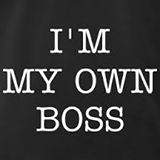Midterm II Econ 4351 Sec 3 – Intermediate Microeconomics Complete Solution
Midterm II Econ 4351, Sec 3 – Intermediate Microeconomics
Directions:
You have 75 minutes to answer the following questions.
You should have nothing on your desk at this time except for the exam, pencils, an eraser, a ruler, and a calculator.
For multiple choice questions, write your answer on the blank line on the right side of each question.
For essay questions, please show your work (step by step) for every question in order to get full credit.
Your handwriting should be legible.
You must stop writing and put down your pencil immediately when time is
up.
Name:
Student #:
Total Points earned __________________
MULTIPLE CHOICE. Choose the one alternative that best completes the statement or answers the question. (2pt each)
1) The short run is 1)
A) three years.
B) a time period in which at least one input is fixed.
C) a time period in which at least one set of outputs has been decided upon.
D) however long it takes to produce the planned output.
E) less than a year.
2) The rate at which one input can be reduced per additional unit of the other input, while holding
output constant, is measured by the
A) marginal product of the input. B) marginal rate of substitution.
C) average product of the input. D) marginal rate of technical substitution.
3) Fixed costs are fixed with respect to changes in 3)
A) time. B) capital expenditure.
C) wages. D) output.
4) Which of the following costs always declines as output increases? 4)
A) Fixed cost
B) Average variable cost
C) Marginal cost
D) Average total cost
E) Average fixed cost
5) Revenue is equal to 5)
A) price times quantity.
B) price times quantity minus average cost.
C) expenditure on production of output.
D) price times quantity minus total cost.
E) price times quantity minus marginal cost.
6) The perfectly competitive firm's marginal revenue curve is 6)
A) vertical.
B) exactly the same as the marginal cost curve.
C) upward-sloping.
D) horizontal.
E) downward-sloping, at twice the (negative) slope of the market demand curve.
7) A situation in which the unregulated competitive market outcome is inefficient because prices fail
to provide proper signals to buyers and sellers is known as:
A) a deadweight loss. B) a market failure.
C) a shortage. D) an imperfectly competitive market.
8) Which of the following is unlikely to occur as a result of a price support program? 8)
A) A cost to government
B) An increase in quantity purchased
C) A reduction in consumer surplus
D) The occurrence of dealweight loss
E) A reduction in producer surplus
9) For the monopolist shown below, the profit maximizing level of output is: 9)
A) Q1. B) Q3. C) Q4. D) Q2. E) Q5.
10) As the manager of a firm you calculate the marginal revenue is $244 and marginal cost is $150. You should
A) reduce output beyond the level where marginal revenue equals zero.
B) reduce output until marginal revenue equals marginal cost.
C) expand output until marginal revenue equals zero.
D) expand output until marginal revenue equals marginal cost.
E) do nothing without information about your fixed costs.
11) The ________ elastic a firm's demand curve, the greater its ________. 11)
A) more; monopoly power B) more; costs
C) less; monopoly power D) less; output
12) Marginal product crosses the horizontal axis (is equal to zero) at the point where 12)
A) total product is maximized.
B) average product is maximized.
C) output per worker reaches a maximum.
D) diminishing marginal returns set in.
E) All of the above are true.
13) Does it make sense to consider the returns to scale of a production function in the short run? 13)
A) Yes, this is an important short-run characteristic of production functions.
B) No, we cannot change all of the production inputs in the short run.
C) Yes, returns to scale determine the diminishing marginal returns of the inputs.
D) No, returns to scale is a property of the consumer's utility function.
14) In a short-run production process, the marginal cost is rising and the average total cost is falling as output is increased. Thus, marginal cost is
A) below average fixed cost.
B) below average total cost.
C) between the average variable and average total cost curves.
D) above average total cost.
15) Several years ago, Alcoa was effectively the sole seller of aluminum because the firm owned nearly all of the aluminum ore reserves in the world. This market was not perfectly competitive because this situation violated the:
A) price-taking assumption.
B) homogeneous product assumption.
C) free entry assumption.
D) A and B are correct.
E) A and C are correct.
16) If a perfectly competitive firm has a U-shaped marginal cost curve then 16)
A) the profit maximizing output will always generate positive profit.
B) the profit maximizing output is found where MC = MR and MC is constant.
C) the profit maximizing output is found where MC = MR and MC is increasing.
D) the profit maximizing output is found where MC = MR and MC is decreasing.
17) Suppose the government raises the price of cheese above the market equilibrium level (P0) by
imposing a price support and purchasing all of the excess supply from the market, and these
quantities are destroyed. Based on the areas in the figure below, what is the change in consumer
surplus after this policy is adopted?
A) Consumers lose area B. B) Consumers lose area A but gain area B.
C) Consumers gain area A+B. D) Consumers lose area A+B.
18) Assume that a monopolist's marginal cost is $10 and the price elasticity of demand is -2. We can conclude that the monopolist's profit maximizing price is approximately
A) $5.
B) $20.
C) $10.
D) The answer cannot be determined without additional information.
19) What describes the graphical relationship between average product and marginal product? 19)
A) Average product cuts marginal product from above, at the maximum point of marginal
product.
B) Average and marginal product do not intersect.
C) Marginal product cuts average product from below, at the maximum point of average
product.
D) Marginal product cuts average product from above, at the maximum point of average
product.
E) Average product cuts marginal product from below, at the maximum point of marginal
product.
Figure 6.2
20) Refer to Figure 6.2. The situation pictured is one of 20)
A) increasing returns to scale, because the isoquants bend toward the origin.
B) decreasing returns to scale, because the isoquants bend toward the origin.
C) increasing returns to scale, because doubling inputs results in more than double the amount
of output.
D) constant returns to scale, because the line through the origin is linear.
E) decreasing returns to scale, because doubling inputs results in less than double the amount of
output.
ESSAY. Write your answer in the space provided or on a separate sheet of paper.
21) Marge's Hair Salon production function is q=F(K, L) = KL where K is the number of hair dryers and L is the number of labor hours she employs.
(a) Does this production function exhibit increasing, decreasing, or constant returns to scale? (2pt) Why? (2pt)
(b) At the moment, Marge uses 16 labor hours and 16 hair dryers. Suppose that Marge can use any amount of
either input. If Marge increased her use of labor hours and hair dryers by 50%, by what percentage would her
production increase? (2pt)
22) Homer's Boat Manufacturing total cost function is: TC(q) =
75
128
q4 + 10,240. Suppose Homer can sell all the boats
he produces for $1,200 in a perfectly competitive market.
(a) What is his profit-maximizing output? (Hint: If y = Ax4+ B, then
dy
dx
= 4Ax3. Use this formula to find the
marginal cost function.) (3pt)
(b) Calculate Homer's profit or loss when he produces the optimal output level in Part (a). (2pt)
(c) If Homer suffers a loss based on your answer to Part (b), should he operate or shut down in the short run?
(1pt) Why? (2pt)
23) The demand and supply functions for basic cable TV in the local market are given as:
QD = 200,000 - 4,000P and QS = 20,000 + 2,000P.
(a) Calculate the quilibrium price and quantity that would prevail in the free competitive market. (3pt)
(b) Calculate consumer surplus in this free competitive market. (2pt)
(c) If the government implements a price ceiling of $15 on the price of basic cable service, calculate the change in consumer surplus. (3pt) Are all consumers better off?(1pt) Why? (2pt)
24) The market demand and supply functions for pizza are: QD = 25,000 - 1,500P and QS = 2,500P - 15,000.
(a) Calculate the equilibrium price in the free competitive market. (2pt)
(b) Suppose the local community charges a $1 per pizza tax. What amount per unit will sellers receive? (2pt)
What amount per unit will buyers pay? (2pt)
(c) Refer to Part (b), how is the burden of the tax shared by buyers and sellers? (How much of the tax of $1 per
unit does each group pay?) (2pt)
25) Barbara is a producer in a monopoly industry. Her demand curve and total cost curve are given as follows:
Q = 160 - 4P
TC = 4Q
(a) How much output should Barbara produce to maximize her firm's profit? (Hint: If y = Ax + Bx2, then
dy
dx
= A + 2Bx; use this formula to find the marginal revenue function. If y = Ax , then
dy
dx
= A; use this formula to
find the marginal cost function.) (4pt)
(b) What is the profit-maximizing price for this monopolist? (3pt)
END OF THE EXAM
Midterm II Econ 4351 Sec 3 – Intermediate Microeconomics Complete Solution
Answer Key Econ 4351_ Midterm II 1 / 5 1) B Sec...





Orginator
Senior JournalistSell Your Solution Report Solution Support Center
Online Users
-
 Orginator
Today
Orginator
Today





A+ - Thank you!
Thanks for the positive feedback!